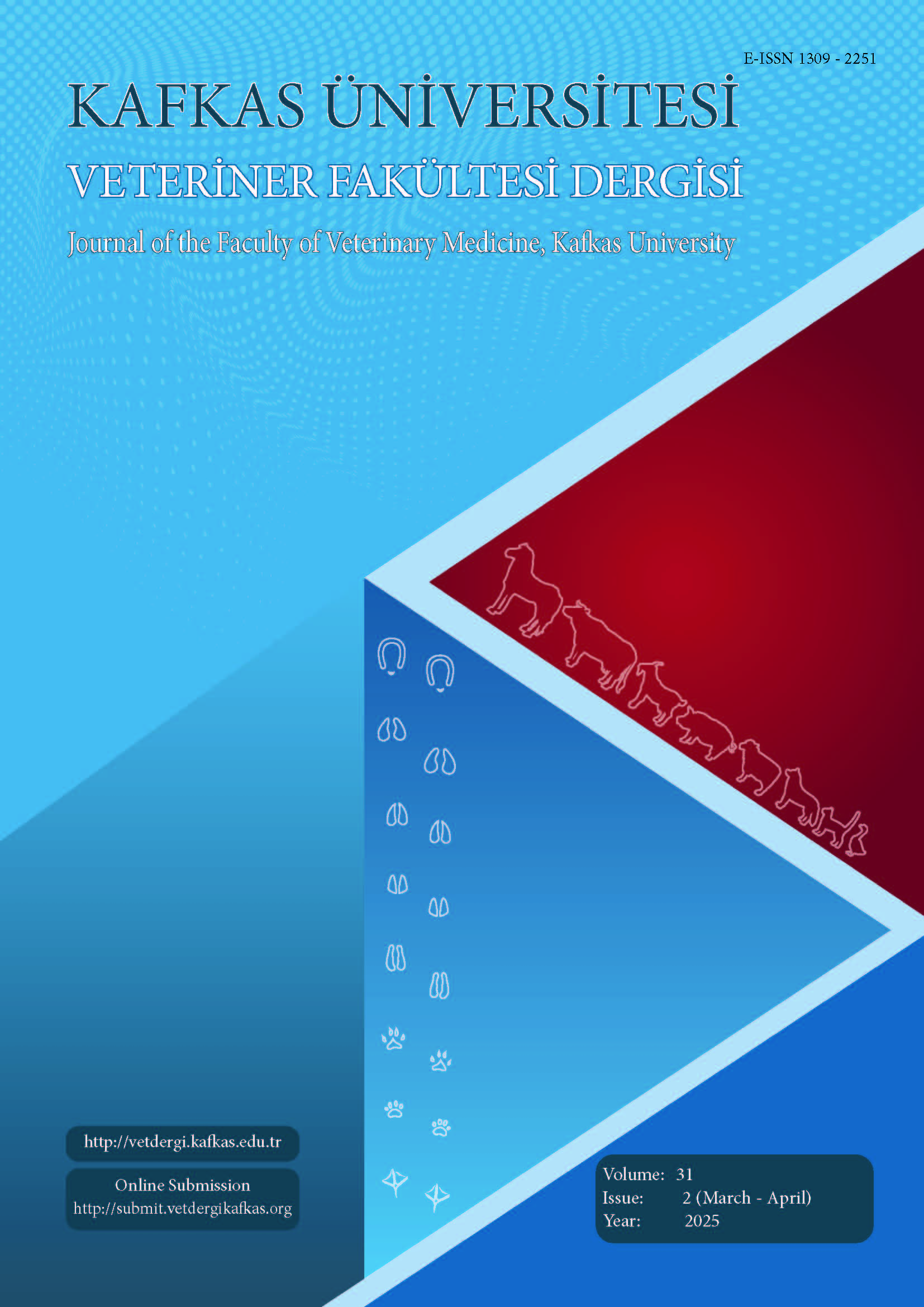
This journal is licensed under a Creative Commons Attribution-NonCommercial 4.0 International License
Kafkas Üniversitesi Veteriner Fakültesi Dergisi
2025 , Vol 31 , Issue 2
Phenolic Composition and Antioxidant Properties of Bee Pollens Belonging to Drimia spp. and Castanea sativa L.
1Karadeniz Technical University, Faculty of Sciences, Chemistry Department, TR-61080 Trabzon - TÜRKİYE2Karadeniz Technical University, Maçka Vocational School, Department of Chemistry and Chemical Processing Technologies, Biochemistry Program, TR-61750 Maçka, Trabzon - TÜRKİYE
3Nakhchivan State University, Faculty of Medicine, Basic Medical Sciences Department, AZ 7012 Nakhchivan, AZERBAIJAN
4Nakhchivan State University, Faculty of Natural Sciences and Agriculture, Chemistry Department, AZ 7012 Nakhchivan, AZERBAIJAN
5Nakhchivan State University, Faculty of Natural Sciences and Agriculture, Veterinary Medicine Department, AZ 7012 Nakhchivan, AZERBAIJAN DOI : 10.9775/kvfd.2024.33471 Bee pollen is a nutrient-dense food and dietary supplement whose nutritional and bioactive properties are largely influenced by its botanical source. Its composition reflects the diversity of the plants from which they are collected, resulting in a rich array of essential nutrients, phenolic compounds, and other beneficial components that contribute to its value as a functional food. In this study, the biologically active molecules and antioxidant properties of two different bee pollen species from the Aydın and Kastamonu regions were investigated. Antioxidant markers, including total phenolic compounds, total flavonoids, ferric reducing antioxidant power (FRAP), and 2,2-diphenyl-1-picrylhydrazyl (DPPH.) free radical scavenging activity, were measured. Additionally, 25 phenolic compounds were analysed using reversed-phase highperformance liquid chromatography (RP-HPLC-PDA). The total phenolic content was determined to be 27.3 mg GAE/g in chestnut (Castanea sativa L.) pollen and 8.5 mg GAE/g in Morca pollen (Drimia spp.). The findings revealed significant differences in both phenolic composition and antioxidant capacity between the two pollen species. The chestnut bee pollen (Castanea sativa L.) exhibited the FRAP, which is likely attributed to its high polyphenol content. Like chestnut honey and propolis, the strong FRAP of chestnut pollen confirms its high potential for use in apitherapeutic and nutraceutical applications. Keywords : Antioxidant, Bee pollen, Castanea sativa L., DPPH., Drimia spp.










